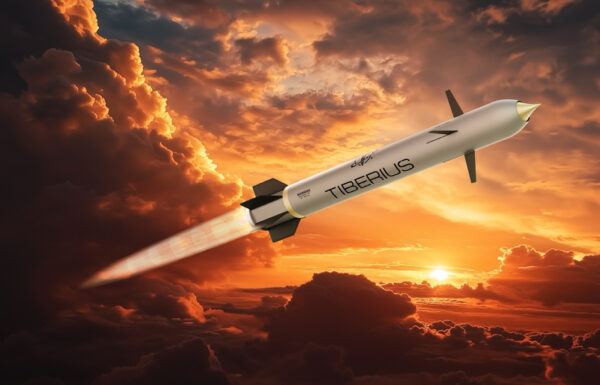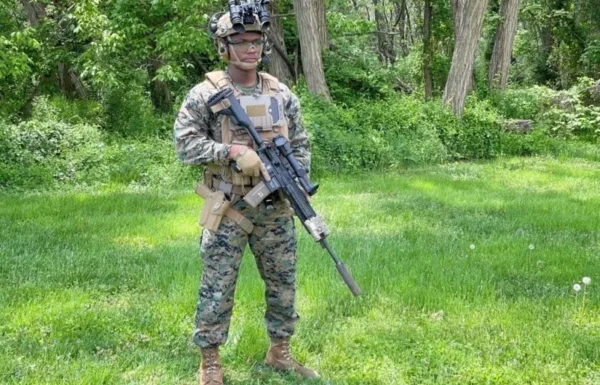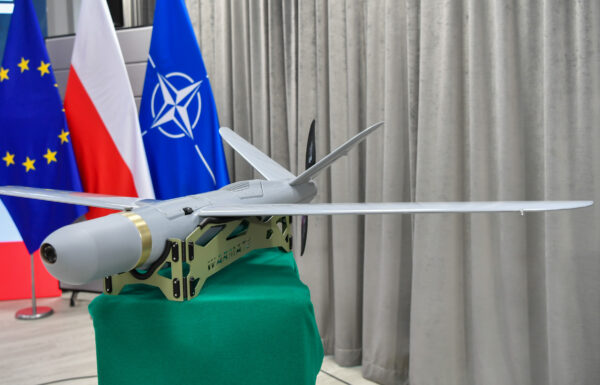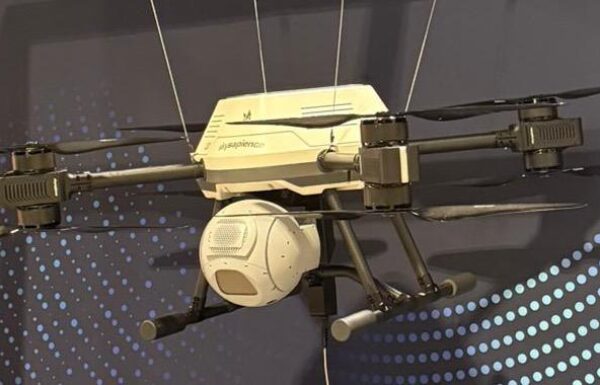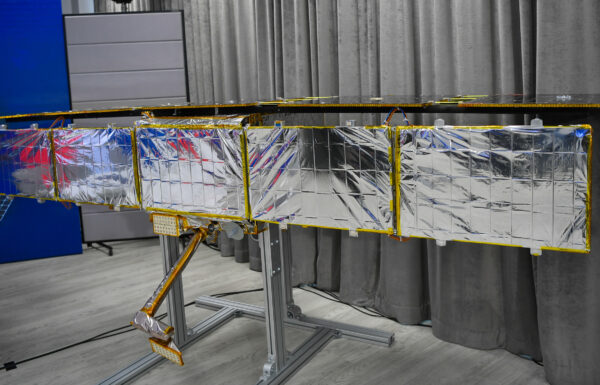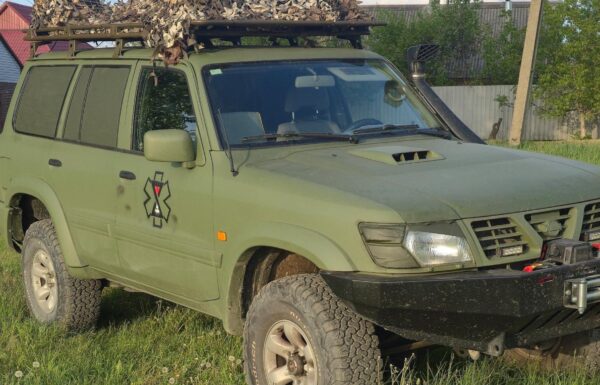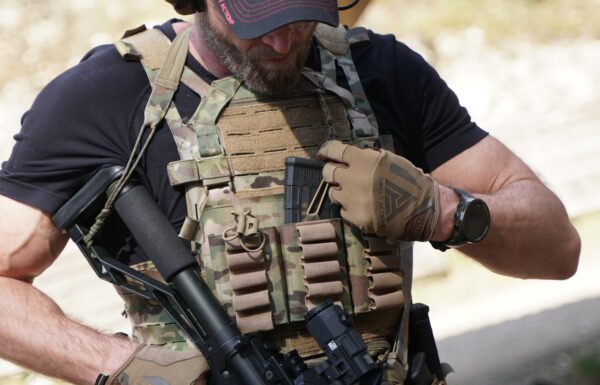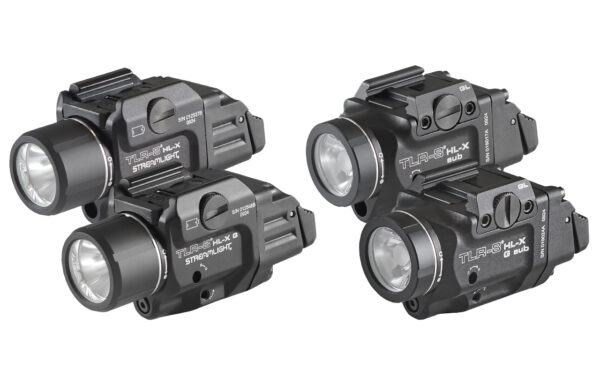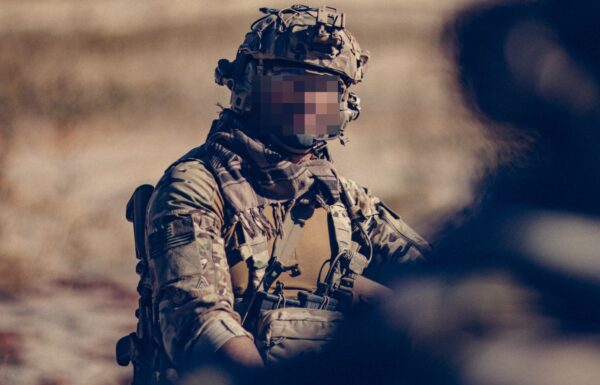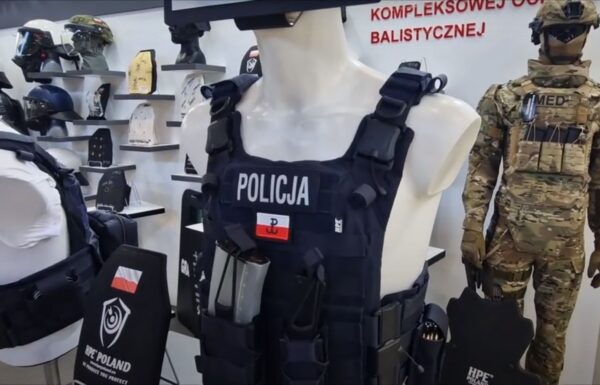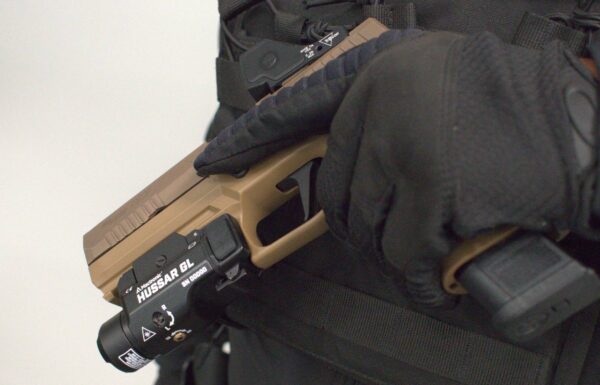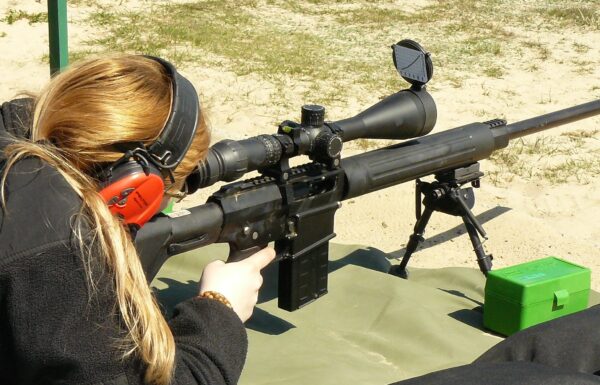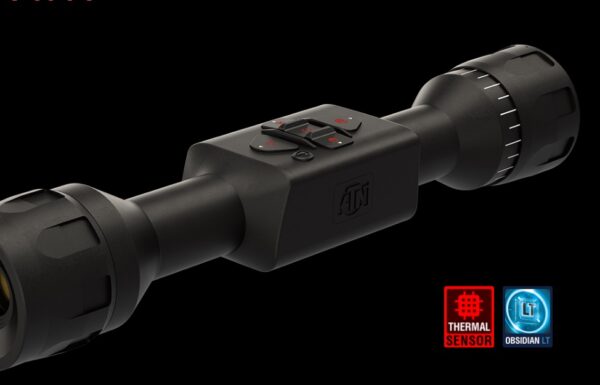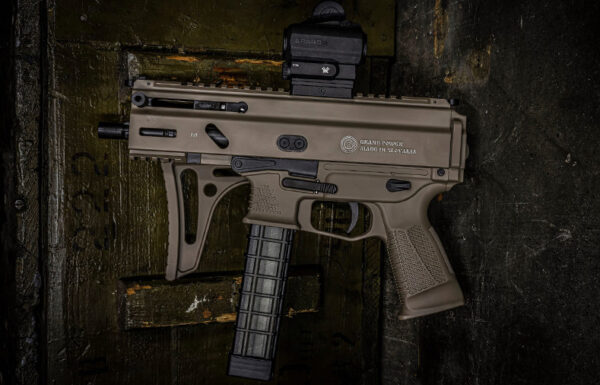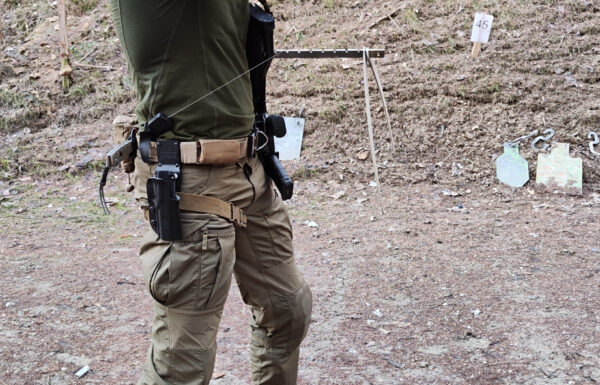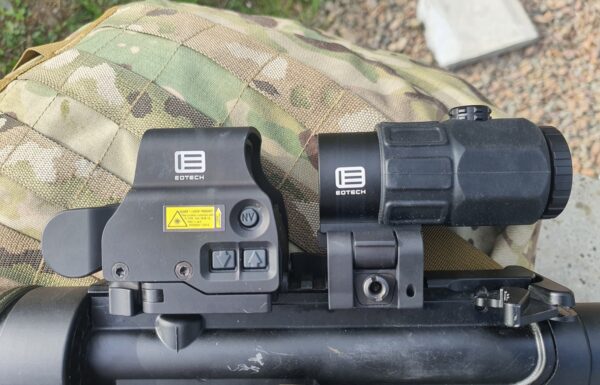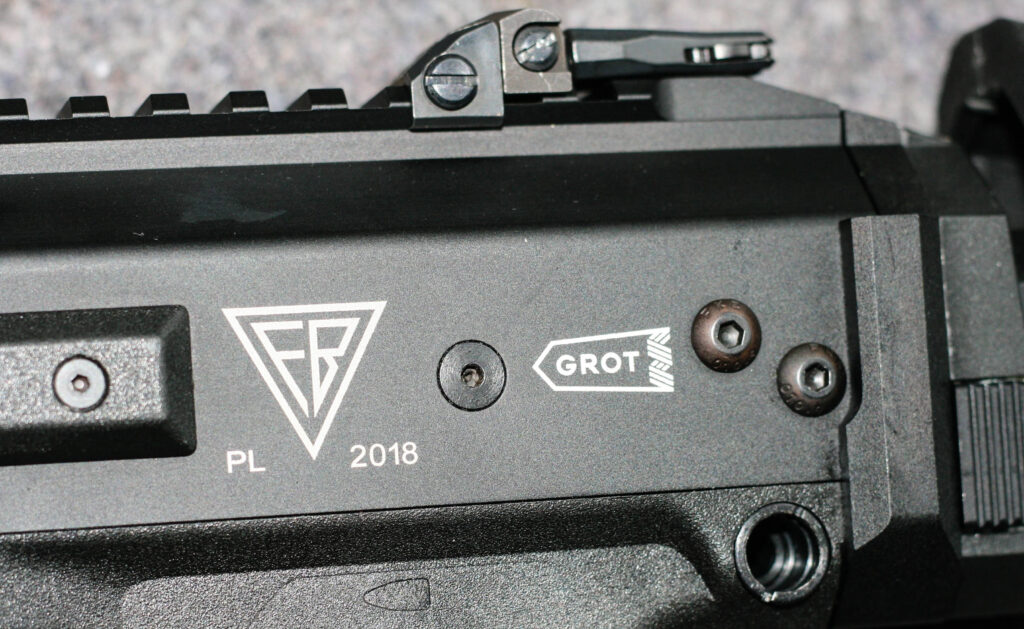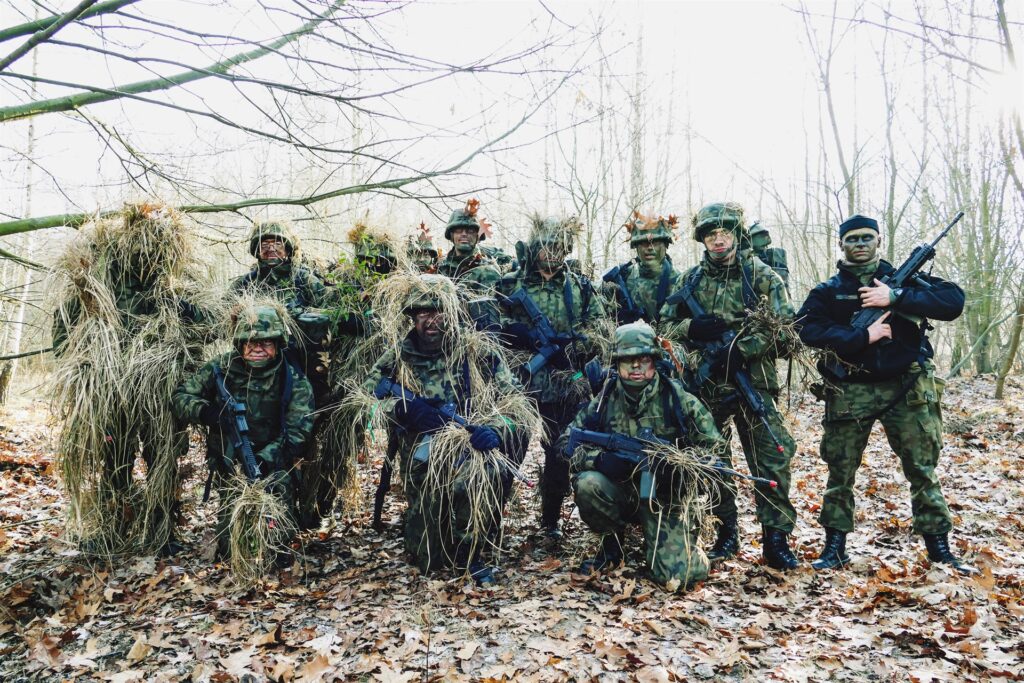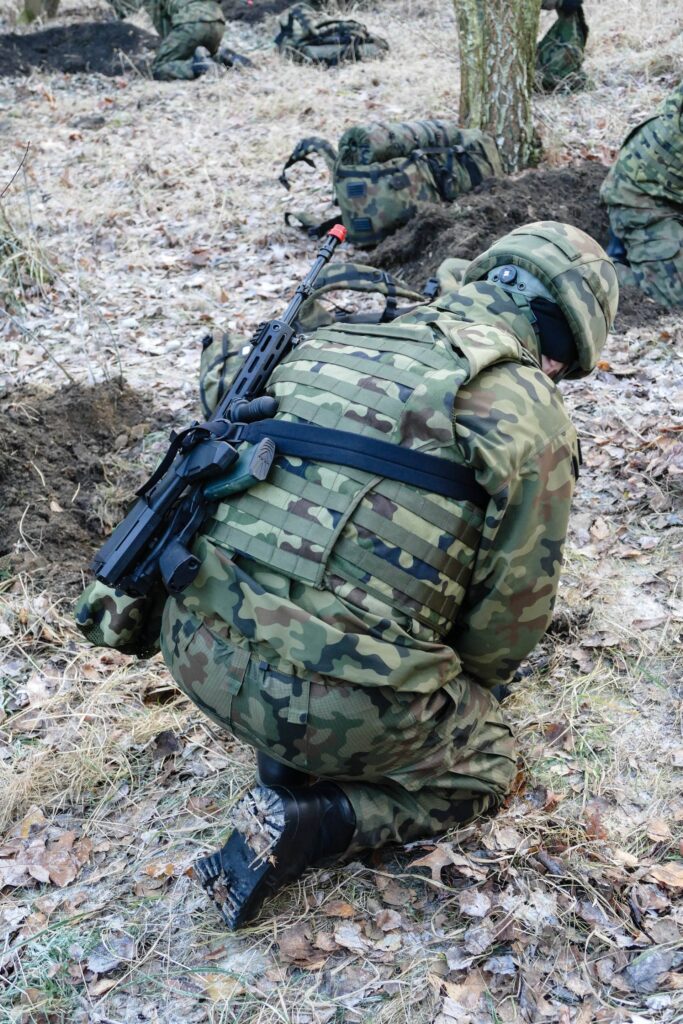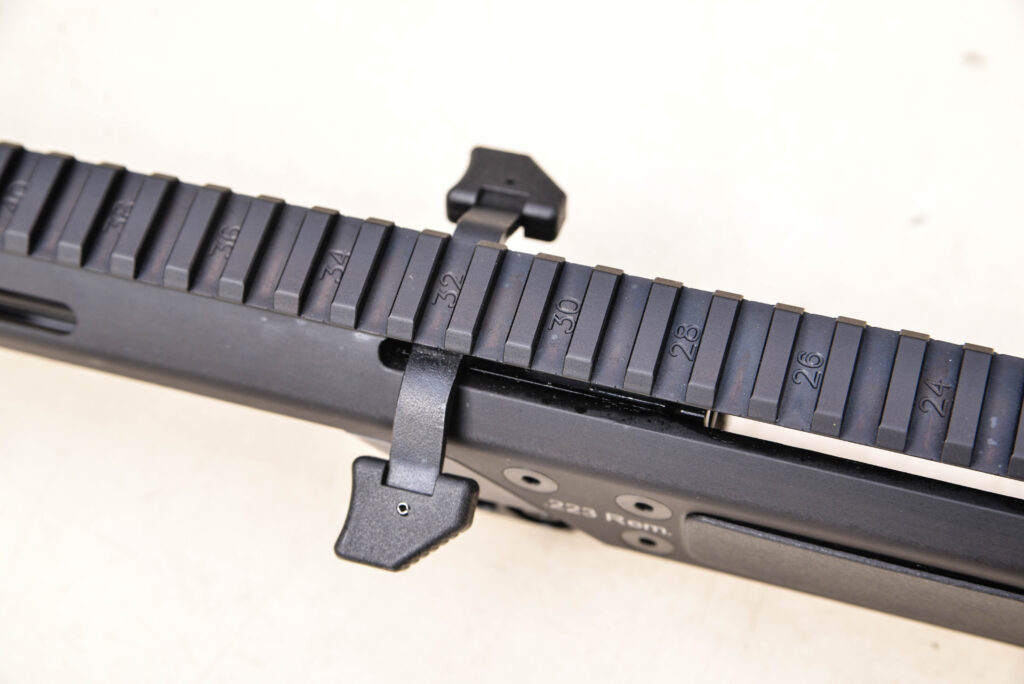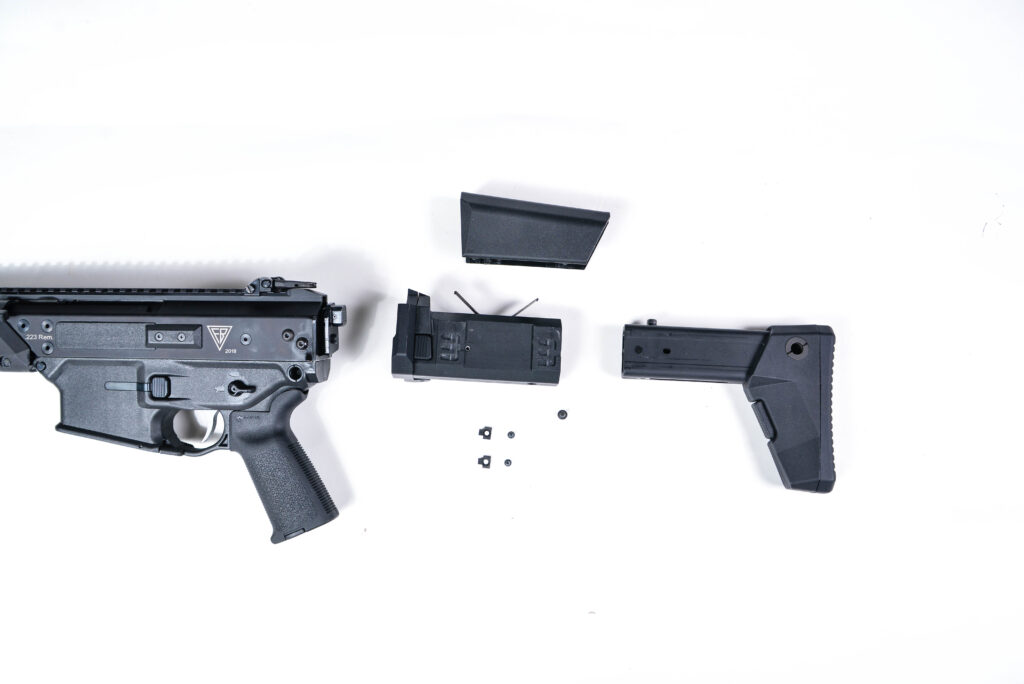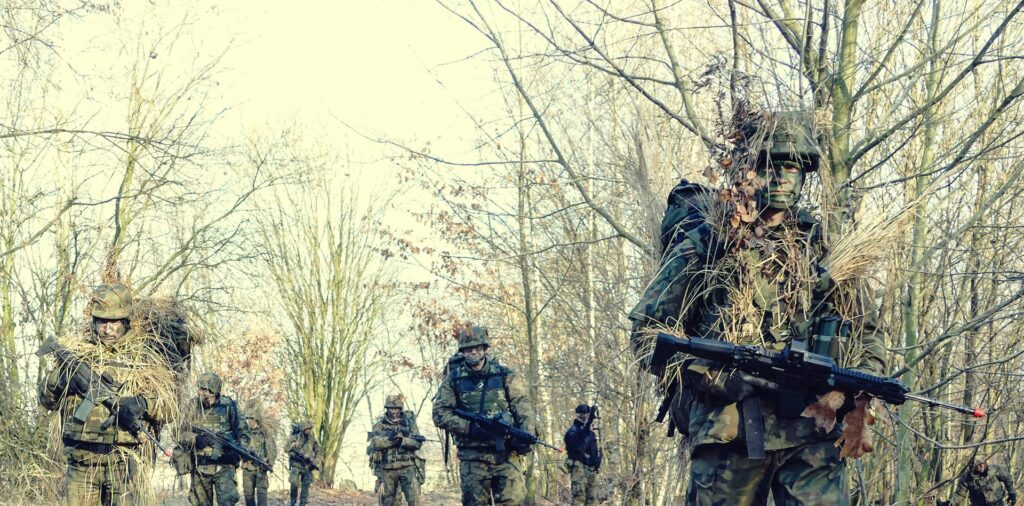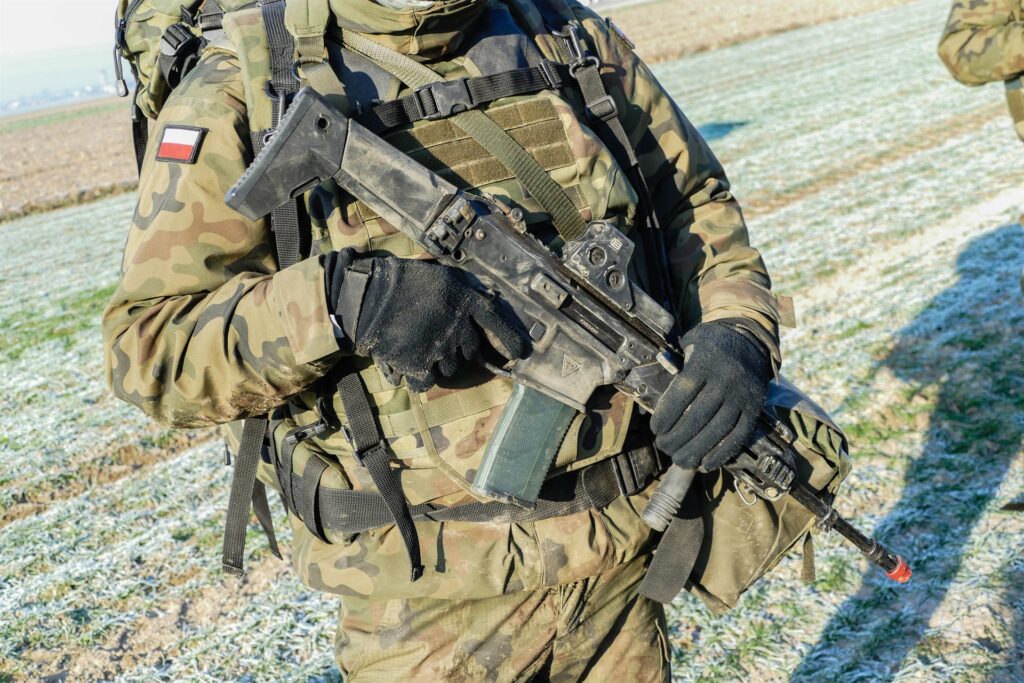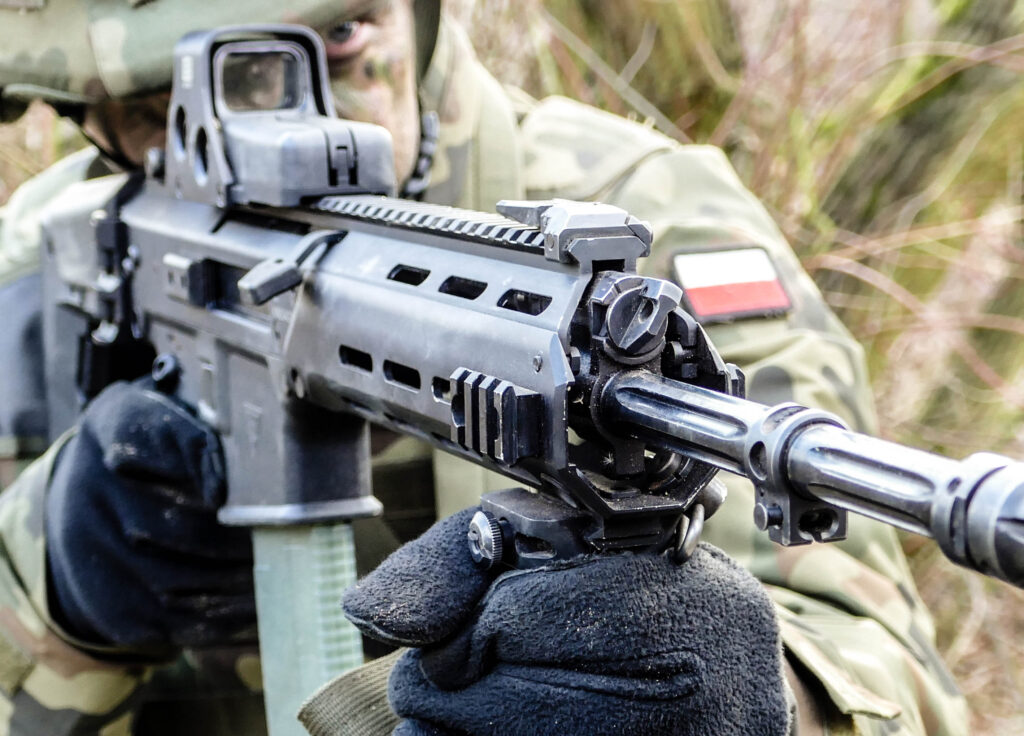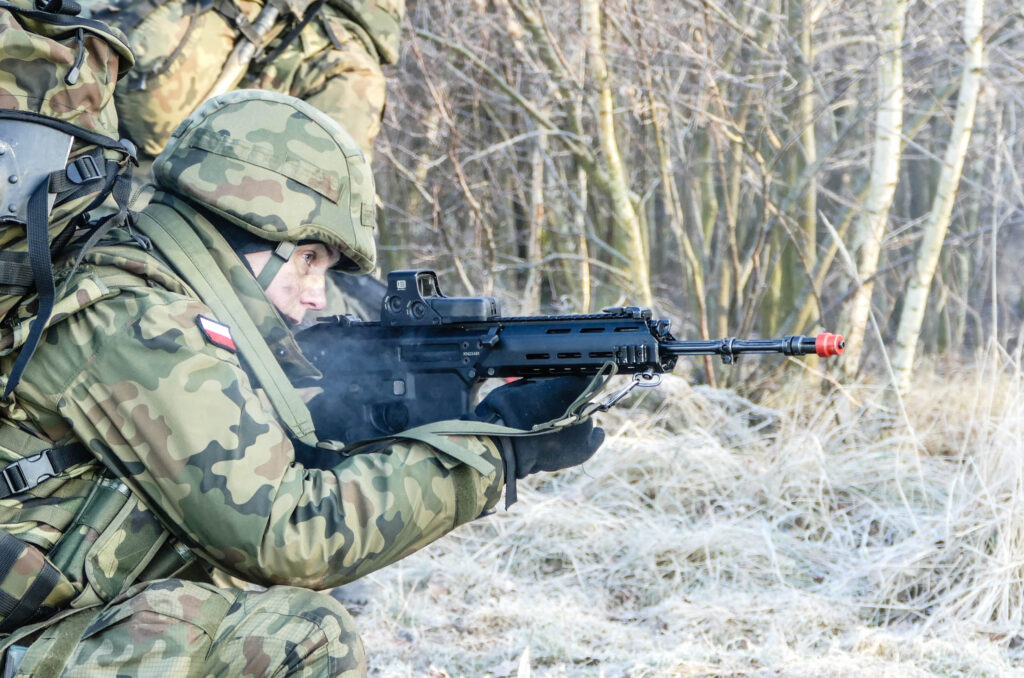Article previously published on MILMAG 01/2019
It’s worth remembering that Gen. Wieslaw Kukula, CO of WOT, mentioned that the procurement contract for Grots contains a clause that allows the new firearms to be updated during their service life in the WOT. This is why the full designation of the rifle (Grot C16 FB-M1) contains the M1 characters (for Model 1). The rest of the designation means classic variant, 16-inch barrel (C16), and the FB stands for Fabryka Broni manufacturer.
The introduction plan even envisioned 2 runs of updates. With interim FB-M2 model and final FB-M3. The final standard is to be achieved by all previous iterations as a part of the initial contract, without any extra spending by the Polish Army. This shows that there is more to pricing a single firearm than just dividing the amount spent by the number of ordered rifles.
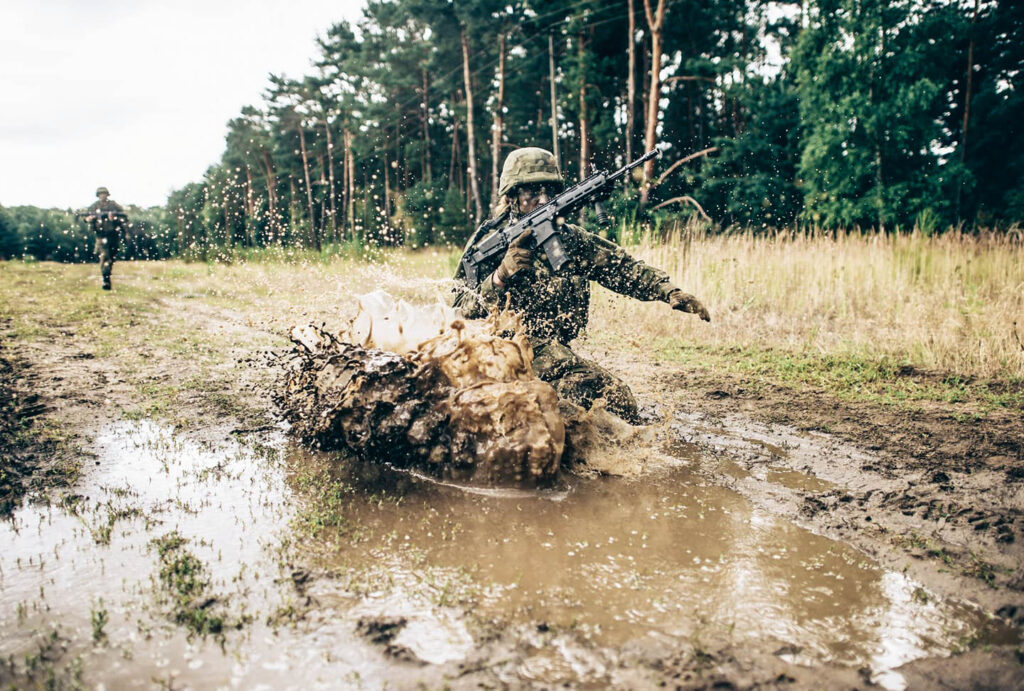
First Grot FB-M1 rifles entered Territorial Defence Force service in November 2017. More than a year is enough for soldiers and instructors from WOT to get to know the new rifle
DESIGNATION CONFUSION
Factory name of the described rifle is MSBS-5,56KA0, where A0 signifies the first (or zero) variant of the weapon and under this designation, the rifle went into service. There is no mention of Grot C16 FB-M1 anywhere in the contract, manufacturing, or WOT documents. This designation was used by Polska Grupa Zbrojeniowa (Polish Armament Group, PGZ) only. Official documents mention just the MSBS-5,56KA0, A1 and A2. This should be brought to some kind of order or, even better, the naming should revert to the pre-war convention. In such a case, the firearm should be called 5,56-mm wz. 2017 Grot service rifle where wz. 2017 stands for the date of completion of army qualification testing or the date of introduction into service.
TEN THOUSAND GROTS
Polish Territorial Defence Force received 10000 of Grot 2 wojska obrony terytorialnej C16 FB-M1 service rifles. By the end of 2017, 2 batches were received, 1000 rifles altogether. By the end of November 2018, another 8 batches totaling the number of rifles in WOT at 6690. Lt. Col. Marek Pietrzak informed First Grot FB-M1 rifles entered Territorial Defence Force service in November 2017. More than a year is enough for soldiers and instructors from WOT to get to know the new rifle MILMAG, that by the end of 2018, 9650 Grot rifles were in the hands of Polish soldiers and the overall quantity of Grots delivered to Polish Army exceeded 10000.
In 2019, the Polish Armed Forces will receive a similar number of new service rifles. Due to the new contract for 20000 of Vis 100 (PR- 15 Ragun) service pistols, WOT will probably refrain from using contract’s option and only the base order will be fulfilled.
Nevertheless, new rifles are also being procured by other services. The contract for 150 of Grots for Border Guard was negotiated in November 2018. Negotiations concluded in the signing of a contract for 122 rifles, worth EUR 253.000 (PLN 1,1 million). Deliveries were to end by 21st of December 2018.
USERS CONCLUSIONS
One year gives enough time for instructors, professional soldiers and Territorial Defence Force members to familiarize with the new rifle. In response to MILMAG’s request, representatives of WOT provided information and comments about problems highlighted by soldiers. The list isn’t long but does not contain all possible changes mentioned by the users. Lt. Col. Marek Pietrzak, the spokesman for the WOT, released a list of most common faults to MILMAG. The problems included: broken charging handle overmoldings (40 cases), broken bolt catch/relase lever (21 cases), broken firing pin (12 cases), loss of gas regulator (6 cases), loss of gas piston (3 cases), damage to stock assembly (7 cases). Problems concerned 5% of the rifles used. Lt. Col. Pietrzak also informed that the need for Fabryka Broni intervention is within the norm preconceived by the WOT HQ. The number of comments from soldiers is falling as a result of already completed modifications and improvement of technical knowledge of users. WOT spokesman also mentioned that Fabr yka Broni commenced servicing actions which included 72 cases of test and replacement of sling attachment and 214 cases of adjustment of rear aperture sight. The last one mentioned requires special attention.
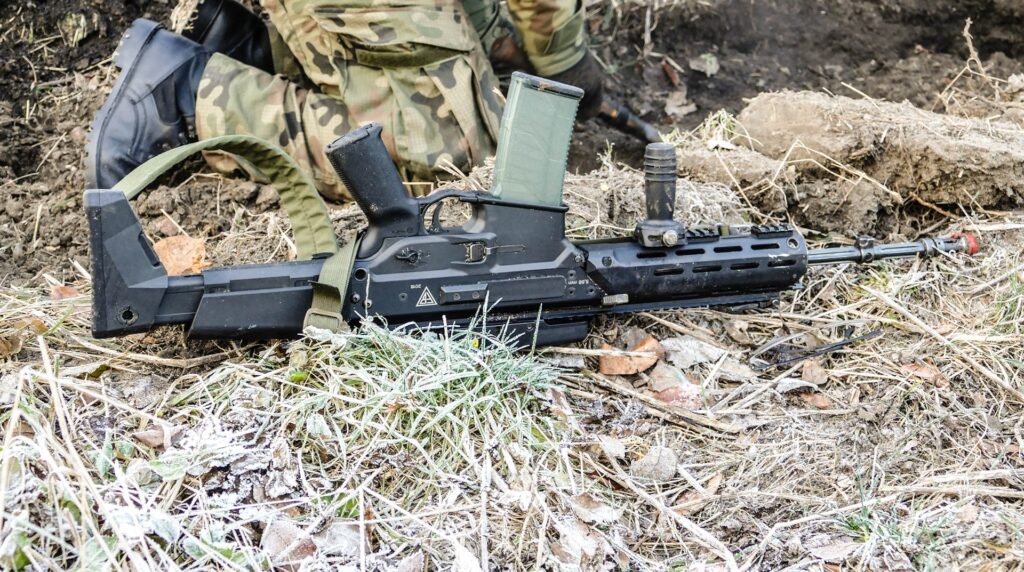
Grot service rifles have a hard life in the hands of Territorial Defence Force soldiers. It’s a beneficial situation as most flaws will be detected this way and corrected in the upcoming new variant of the rifle
INEXPERIENCED TESTERS
MSBS-5,56 is the first Polish individual service weapon. Never before, has Poland created a new rifle from scratch. Grot under went strenuous qualification testing, included long-time vibration examination. Despite many voiced opinions that the rifle should be given to the experienced units and Iraq/ Afghanistan veterans first, initial testing was conducted by inexperienced users from WOT. This happened to be beneficial as some unveiled issues would probably never occur in the hands of experienced soldiers. Difference between seasoned and novice users is also visible in the trials conducted by Special Forces. Such information provided by different types of users is invaluable for the manufacturer.
It’s also important to mention what testers are NOT mentioning in their comments. First of all, there isn’t a lot of talk about jams. Yes, these do happen, as always (especially when firing blanks), but the jams are not emphasized by the users as the main problem. Reliability is the most important characteristic for a military firearm and the Grot seems to fulfill the requirements in this regard.
There are hardly any negative comments about ergonomics and features. Users praise the location and functionality of the rifle’s controls.
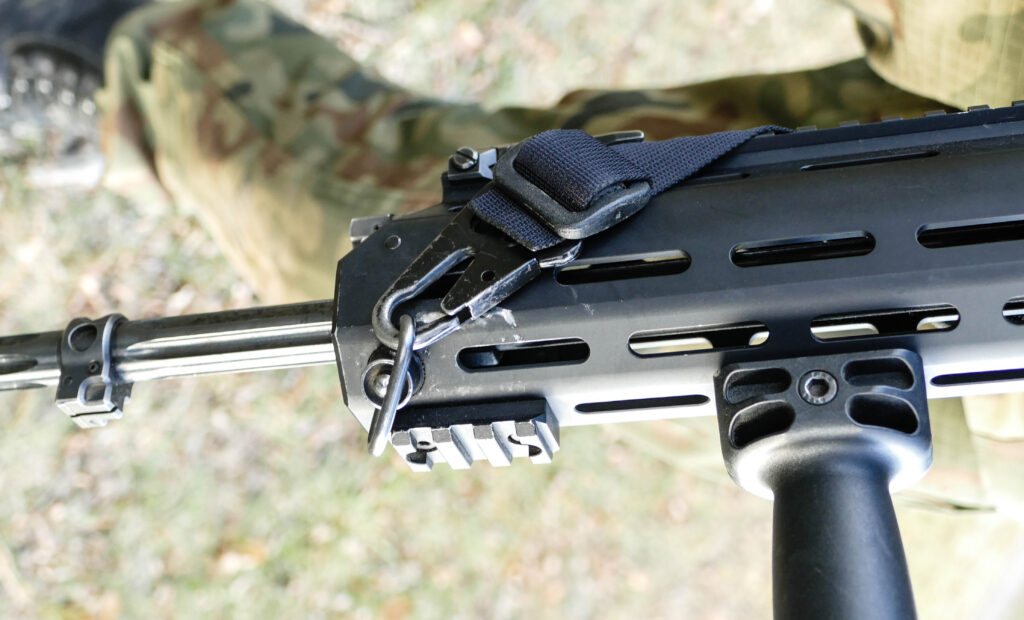
Grot FB-M1 hasn’t got the smartest QD sleeve mount for the sling. It is obvious, that the carabiner rubs against the handguard
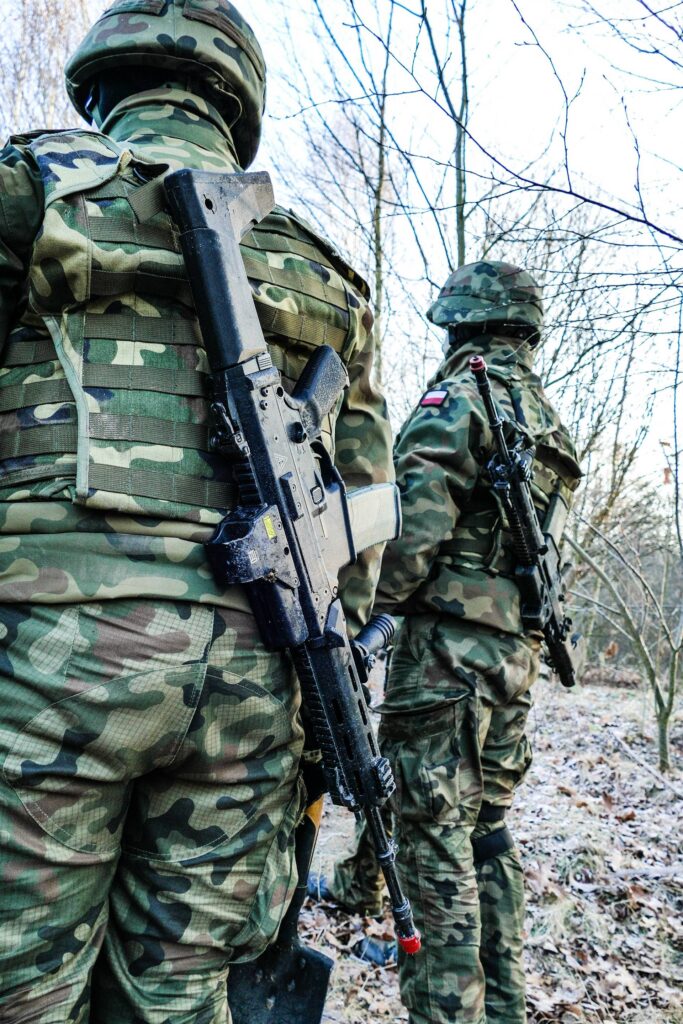
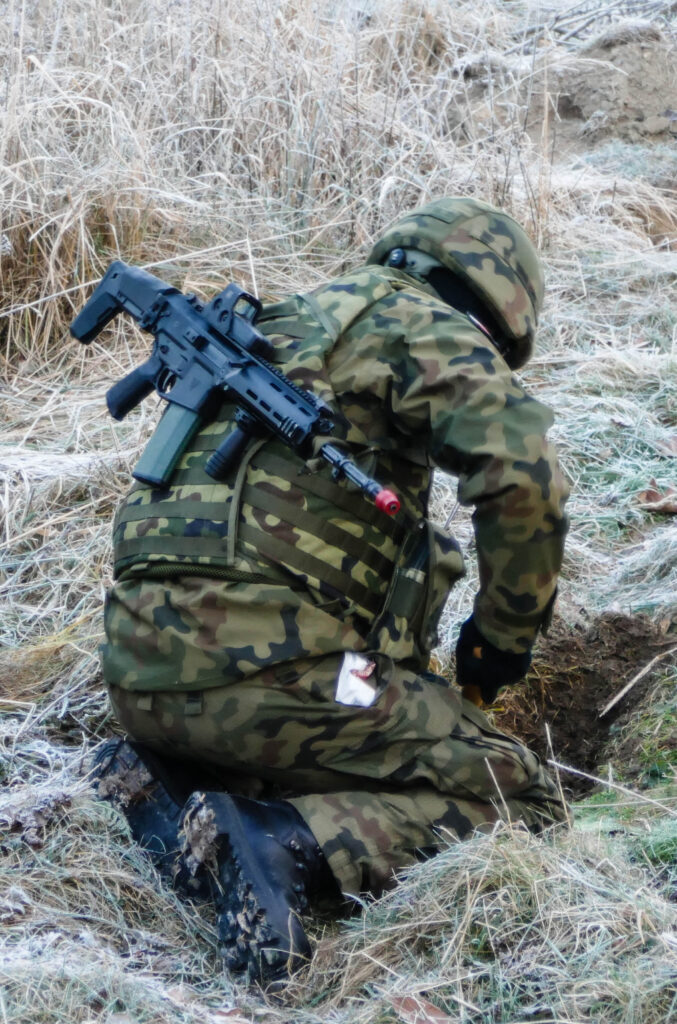
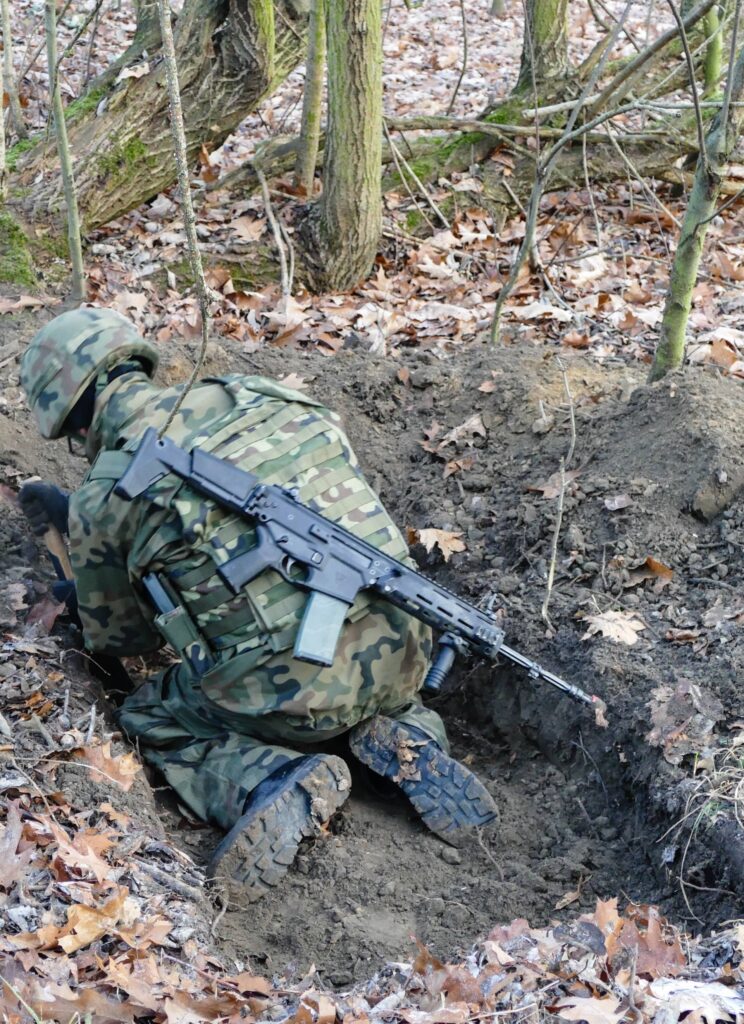
Carry sling art. Please also notice the barrel poke on the last photo. This is the first training and correct habits will have to be developed in the future during the years of service
LACK OF TIME
From the WOT’s 16-day of training, only one is spent for rifle familiarization and shooting. This isn’t enough time to learn more, than safe handling of the weapon. In fact, safety training is very comprehensive. WOT soldiers learn the safety/fire selector controls, trigger discipline, and jam clearing. Quite often soldiers do not have time to read the manual, don’t know how and where to aim, and don’t know the distance rifle is sighted for. Hits on the target happen sometimes, as the rear aperture sight is more intuitive than the traditional iron sights. Much better results are achieved when holographic sights are used. Once both eyes open principle is understood, accurate fire becomes instinctive. This, however, does not mean that training in the use of iron sights is pointless.
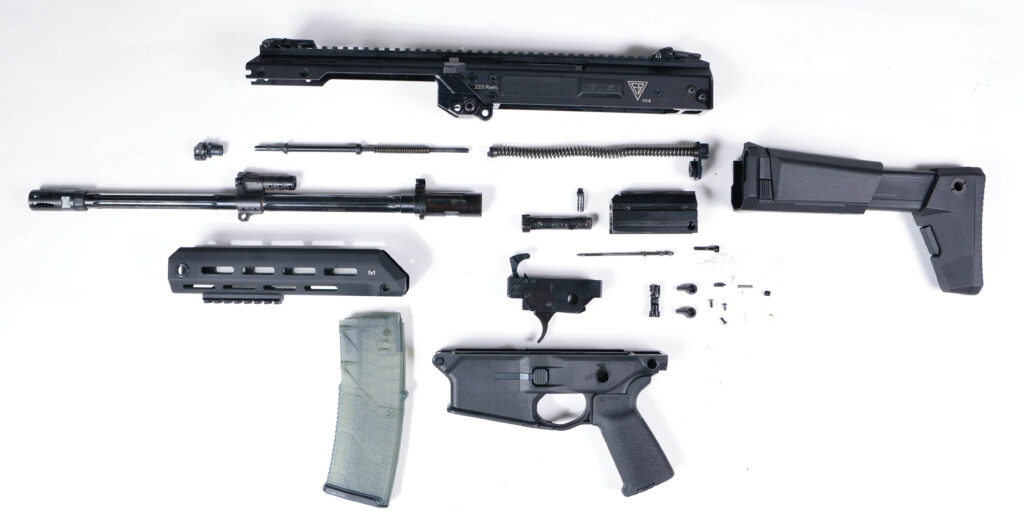
Grot disassembled more than partially, with trigger/firing mechanism removed. The handguard is of the medium variety for the Grot FB-M1 rifles
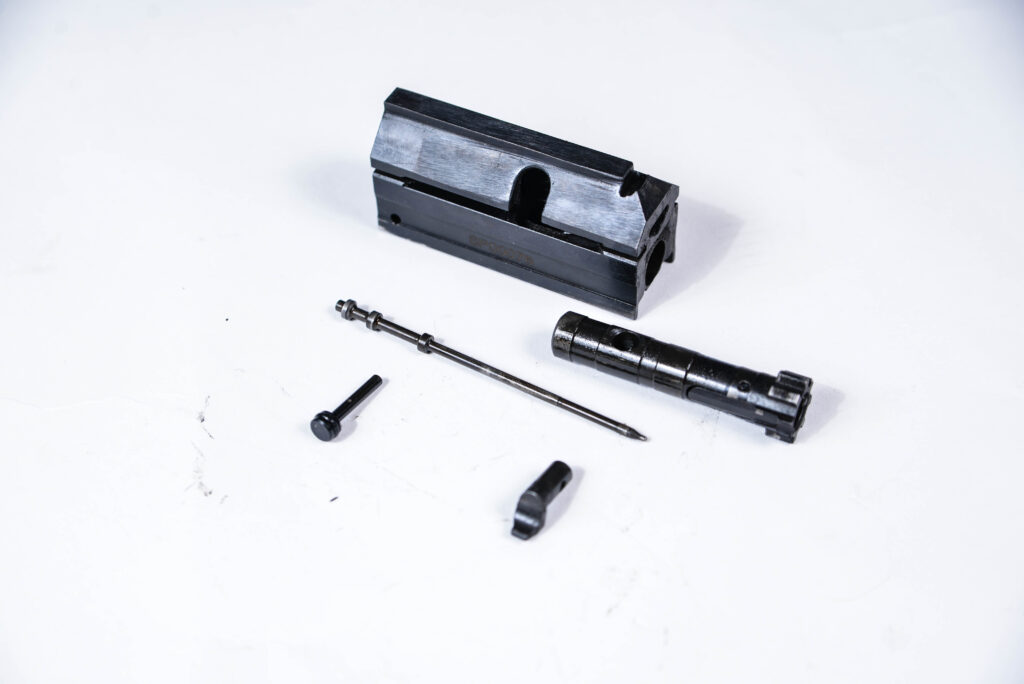
Bolt assembly ready for cleaning. Bolt carrier, bolt, firing pin with retaining pin and cam pin are visible
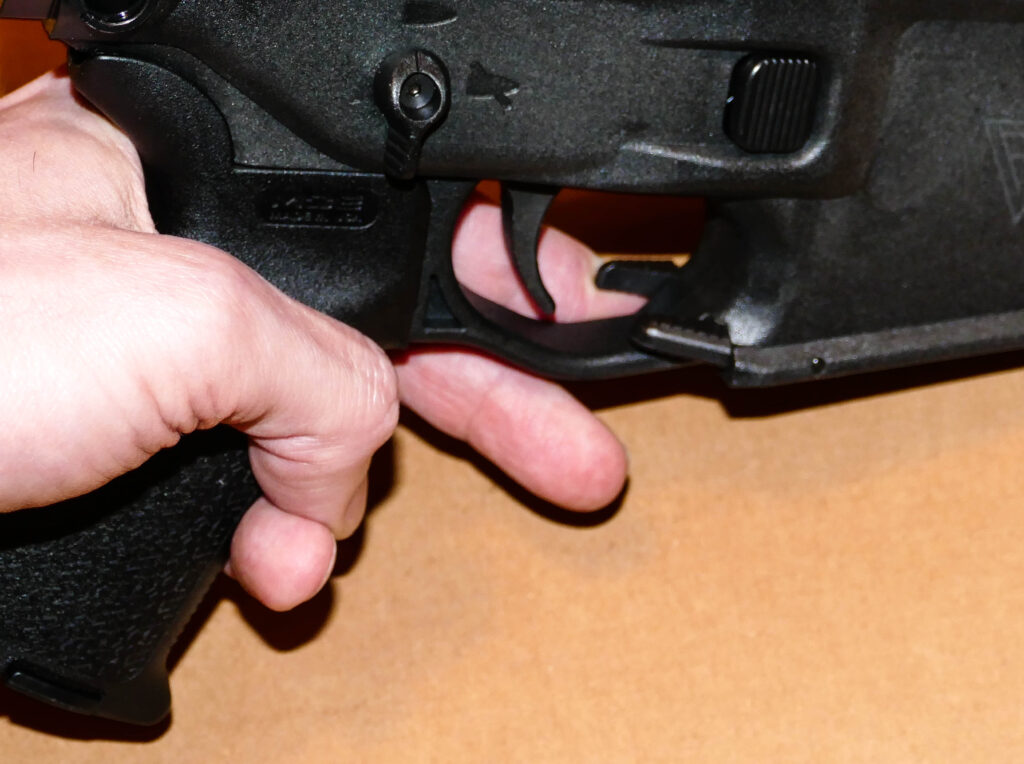
Bolt catch lever. When lifted with the index finger, the bolt carrier stops in the rear position. To release, the lever has to move downwards
SIGHTS MATTER
A problem with sights cropped up during the initial user testing. It’s important to remember that the rifles of the MSBS- 5,56 family were designed to be used with optical or optoelectronic sights – hence the long universal mounting rail on top of monolithic upper receiver. The rifle does not have traditional bases for front and rear sight.
MSBS-5,56 is a part of the Tytan advanced combat system. As such, the rifle was designed to work with PCO CK-1T red dot sight, small zoom (4x to 6x) scope, thermal scope, or night vision scope. Outside of Tytan program, DCM-1 Szafir and LDK-4 4×32 scope with MK-1 MRDS were also proposed as MSBS-5,56 sights.
The folding iron sights installed by Fabryka Broni were considered as back up – to be used only if the main sight got damaged. However, Grot’s received by WOT came only with the backup sights. Moreover, the rear aperture sight has a large adjustment knob on its side. When the rifle is dropped, this knob hits the ground first – hence a large number of servicing on rear aperture conducted by Fabryka Broni. The element itself will have to be upgraded as well to prevent such occurrences in the future. Durability and impact resistance of the folding sights is always considerably lower than of the fixed sights and the mounting location does not matter in this case. To provide a parallel expression: an emergency spare wheel won’t have the same driving characteristics as a normal one. The problem here lies within the system, not the rifle itself.
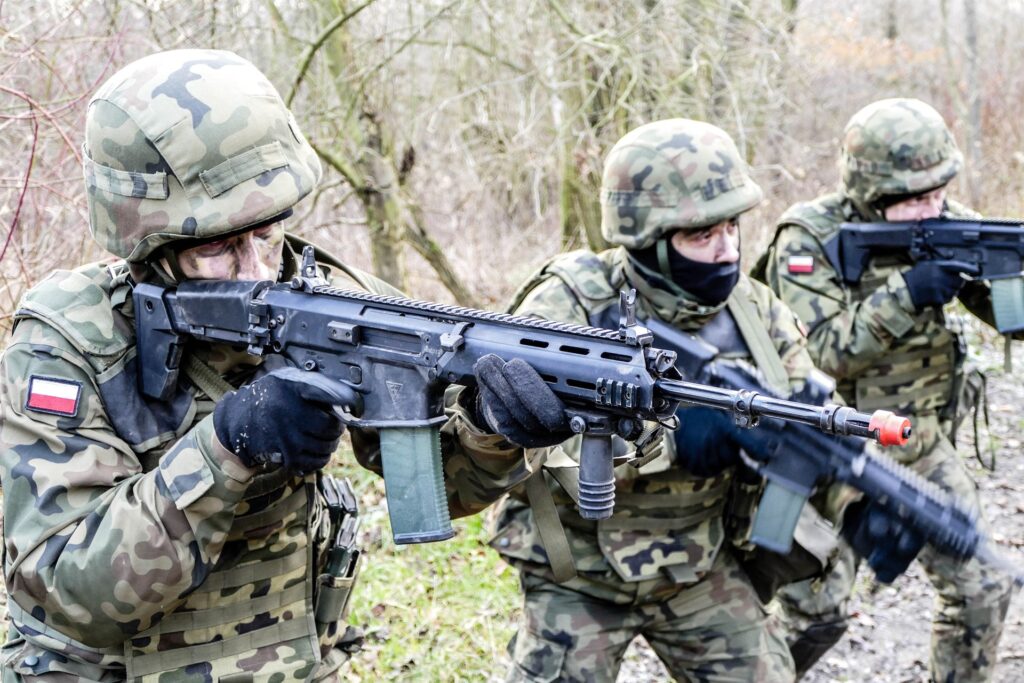
There are not enough optoelectronic sights for every member of WOT, so the folding back up sights are used and primary sighting device. Fabryka Broni should develop a fullyfledge set of fixed iron sights, similar to the ones purchased by French on H&K HK416-F
RED DOTS FOR WOT
That’s why WOT – using the lack of iron sights justification – procured 3000 of EOTech HWS.552.A65 holographic sights. Another 1000 will be purchased by Special Forces but from WOT budget and for their use. Additionally, WOT is waiting for delivery of 2000 of the Aimpoint Micro T-2 red dot sights. Micro T-2 is also to become a base sight for Special Forces. MSBS-5,56 is an advanced rifle so the folding, back up sights should spend most of the time in the folded position, used only in case of primary sight malfunction. However, to completely solve the problem, fixed and impact-resistant iron sights should also be developed. On the other hand, maybe it’s time to bring the 21st century to the Polish Army and procure a large batch of optical or optoelectronic sights such as PCO-made Szafir. The second possibility seems more likely and the decision of WOT HQ concerning a purchase of extra sights and changes in the training program suggests that mechanical sights will indeed be treated as back-up.
PROS AND CONS OF MODULARITY
It will take many years for the Polish Army to come to terms with a possibility of soldiers tinkering with their new Grot rifles. From this perspective, modularity can be considered as a disadvantage – Grot can be broken a lot easier than Beryl. The whole idea behind the MSBS system pivoted on the fact, that certain elements of the rifle, like the barrel, can be easily removed and replaced. With the army consisting of many inexperienced soldiers, many instructors believe that the ease of modification can be a problem. Technical know-how required when using the Grot has to be broader than for Beryl or AK/AKM. On the other hand, new rifles will be used by a generation which can expertly use complicated devices such as smartphones and would look with disdain on a traditional, rotary dial phone.
There is a lot of anxiety in the Territorial Defence Force in regards to Grot modularity. Left-handed soldiers are not allowed to use one of the primary benefits of the system and change the ejection port o the other side. Furthermore, many of them don’t even know of such possibility and are surprised by the blanking plate present opposite the ejection port! Of course, MSBS-5,56 ejects a bit forward so it’s not such a big problem. Ambidextrous controls are highly appreciated by the lefties.
M2 TOWARDS M3
The changes suggested by the Territorial Defence Force for the Grot C16 FB-M3 (MSBS-5,56KA2) service rifle include upgrades such as the strengthening of the charging handle cover fitment, change in the gas regulator mounting, upgrades to the handguard and design change of the bolt catch lever. The most important change, however, is to widen the training to include the technical aspects of the Grot rifle. Changes were also made to live-fire training in WOT.
Initially, the interim Grot C16 FB-M2 (MSBS-5,56KA1) will reach the WOT soldiers. Changes in this variant will include handguard modifications and relocation of the sling attachment. It will be rail-mounted, so an individual soldier can fix the sling in a comfortable position. The attachment will be fixed in place with Magpul MLOK system. At first, these changes were to happen in 2018 but it seems that improved Grot C16 FB-M2 (MSBS-5,56KA1) rifles will appear in 2019. The target Grot C16 FBM3 (MSBS-5,56KA2) service rifle will have, among other changes, a modified handguard, with a different opening for the gas regulator and a protection system against losing it. This will significantly improve the functionality of Polish design.
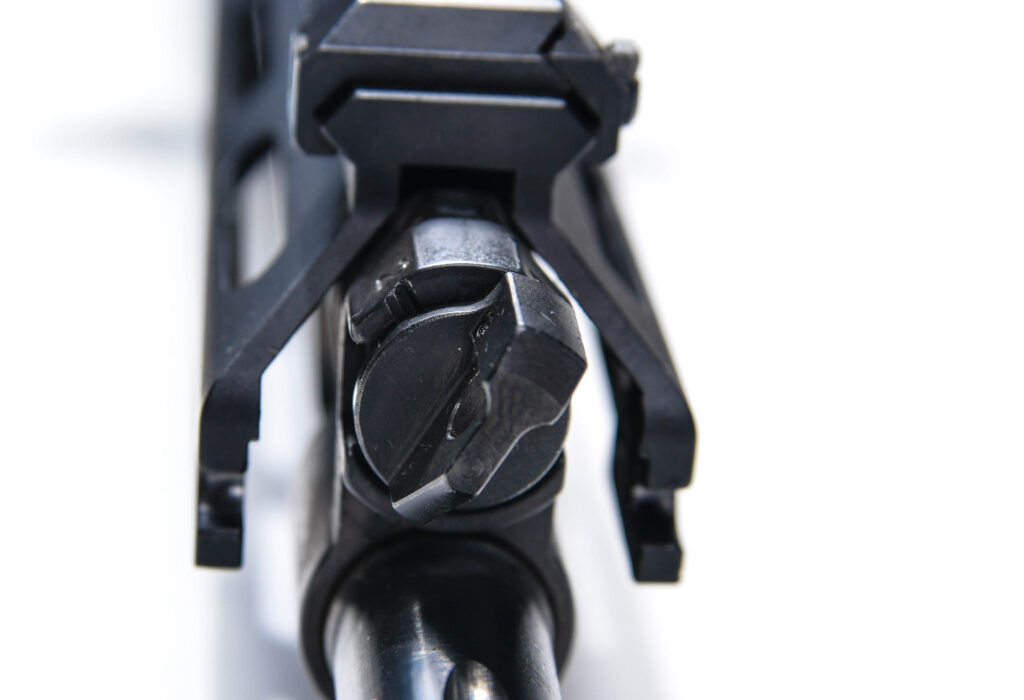
The gas regulator in the normal shooting position. It’s hard to imagine how it can go flying if it’s properly placed in the rifle
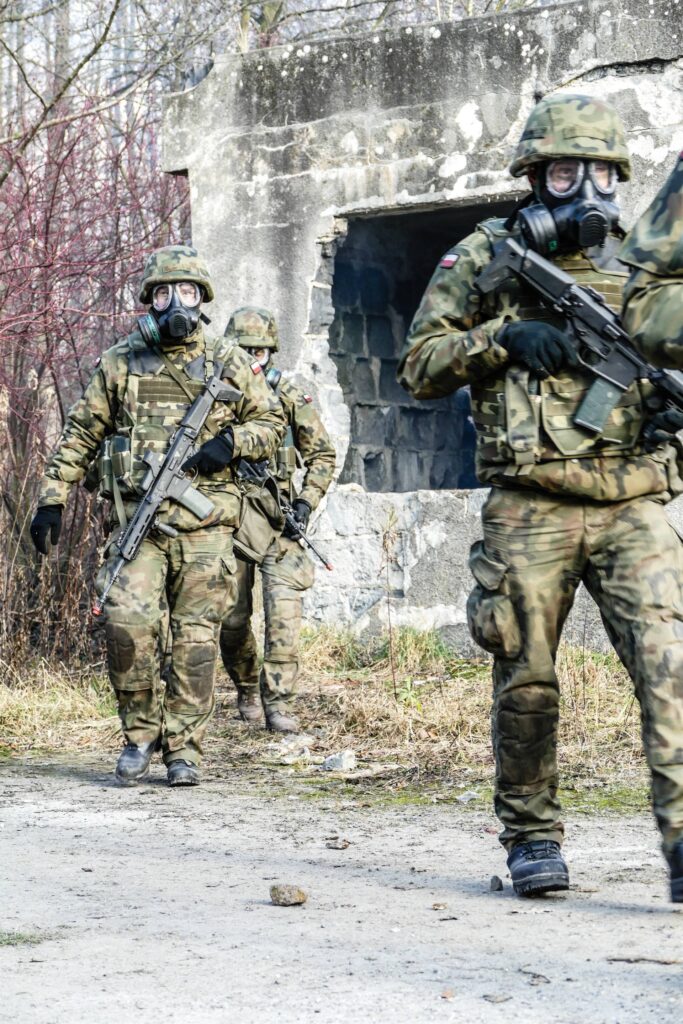
Lack of knowledge and instructor’s reluctance results in many left-handed soldiers using the rifle configured for the right-handed shooter. Where is the trademarked modularity?

Despite many opinions, that new rifles should be tested by experienced units first, WOT testing is beneficiary. Many flagged problems would not happen in the hands of experienced users
NOT BAD, BUT AIMING FOR BETTER
Fabryka Broni completed its reconfiguration for manufacturing of Grot in the second half of 2018. Cooperation between the producer and Armed Forces was quite an unusual occurrence in Polish armament history and for the first time in the Polish Army, service weapon will be gradually upgraded during its service life. Both the Army and Fabryka Broni knew, that the M1 version isn’t final. Since the beginning, WOT considered the introduction of changes. This is a very smart approach which can result in a quicker, cheaper, and more effective development process and strengthen the ties between the manufacturer and the Armed Forces.
WOT can’t wait for the 10-inch/254-mm barrel carabines. Same as with Special Forces testing, shorter barrels can be introduced into service as additional modules. Territorial Defence HQ also plans to order conversion kits for the training of force-on-force scenarios
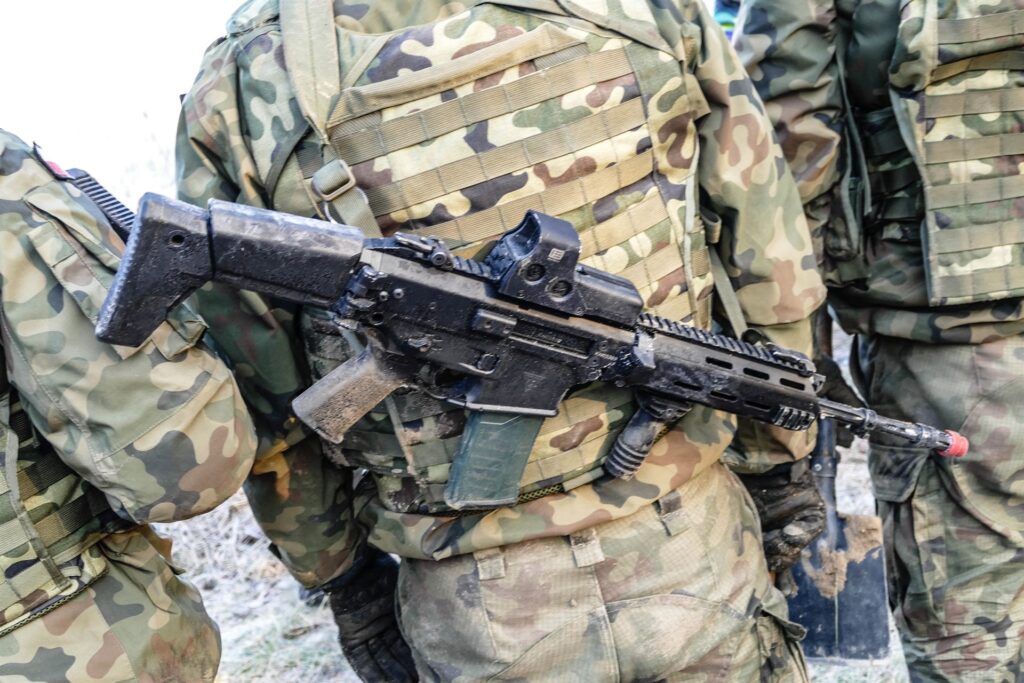
Grot in -5 degrees Celsius. Sudden temperature changes are a great test of rifle’s reliability


